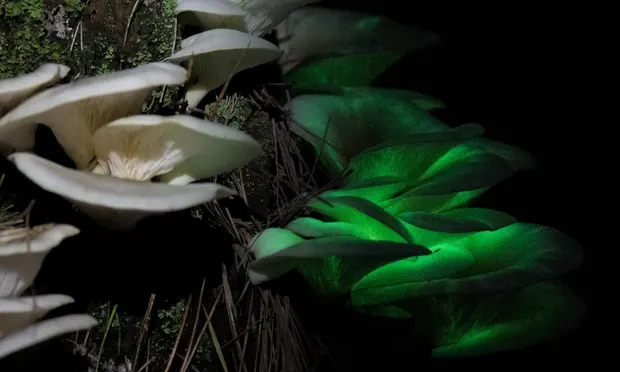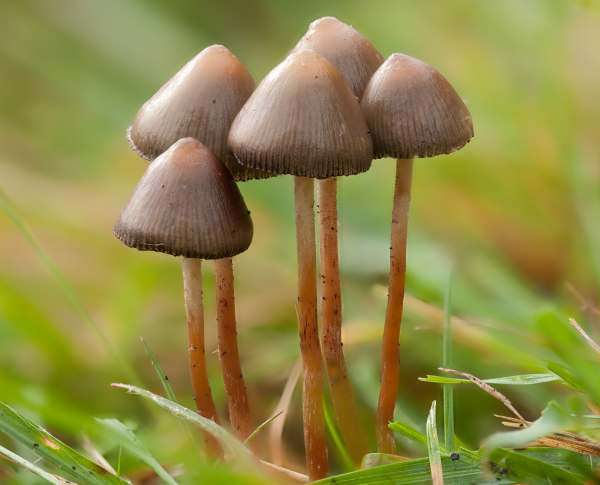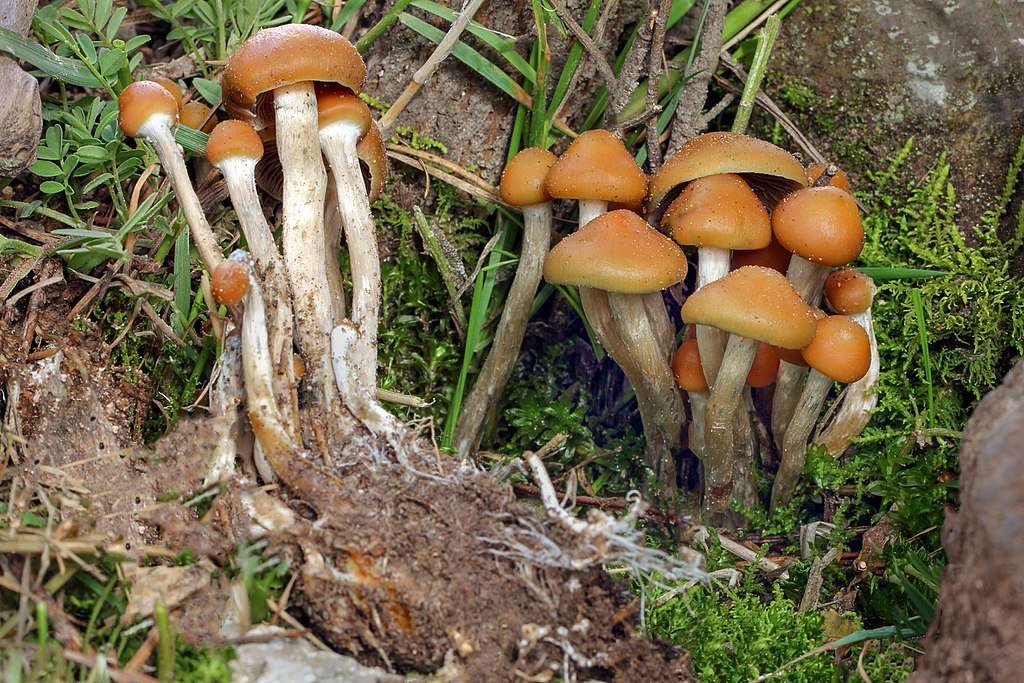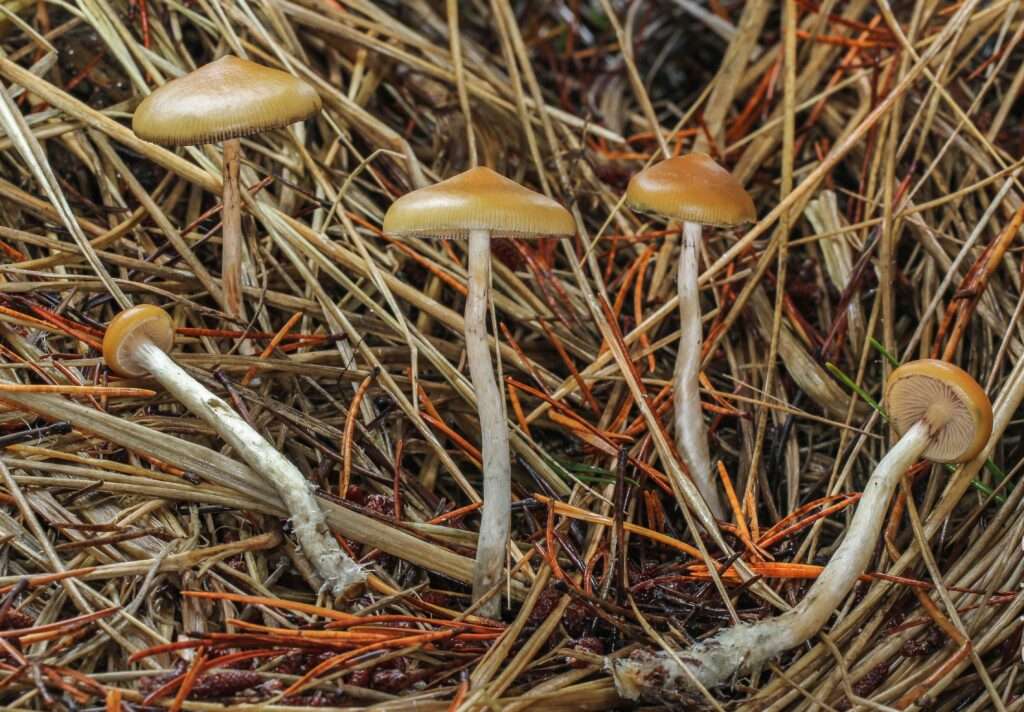
Scientific name
Omphalotus nidiformis
Description
Omphalotus nidiformis is known for its bioluminescent qualities. The color of the cap varies greatly, sometimes seeming cream but frequently having tints of, brownish, orange, greyish, purple, or maybe even bluish-black. Although the cream color is the most common color for the margin, brown forms might have brown or tan margins. Younger specimens are frequently darker, and the center typically includes numerous deeper colors. It has in-rolled borders and can reach a diameter of up to 30 cm. It has a funnel- or fan-shaped appearance. The decurrent, cream-white gills frequently leak with dampness. They have a smooth border until they mature and can be up to 13 mm deep, loosely to tightly spaced. The stipe is up to 8 cm long, tapers to the base, and may be attached to the cap in a lateral, central, and mixed manner.
When a person’s eyes have accustomed to the dark, low light settings are optimum for seeing the bioluminescence of the ghost fungus. The fungus’s gills are the most luminous, generating a green light that diminishes with age. Although the luminescence’s brightness varies, William Henry Harvey, a botanist, once claimed that it was sufficient to read a watch face. It is unknown if the mycelium also emits light.

Habitat
Ghost fungus may be found in eucalyptus and pine forests, as well as in a variety of environments including the dry scrubland and the subalpine regions as well as in public gardens and parks. On dead wood, fruit bodies can be found in overlapping clusters and large numbers. It is widespread throughout Australia’s subtropical and southern regions. It has been noted in Norfolk Island, which is outside of Australia. It was spotted in Kerala, India, in 2012.
Uses/Importance
Omphalotus nidiformis cannot be eaten. It is said to taste moderate, but consuming it will cause vomiting, which often happens 30 to 2 hours after intake and lasts for many hours. The patients recover without any long-term side effects and there is no diarrhea. A sesquiterpene molecule known as illudin S is the poisonous component of several species of Omphalotus.
Phase II clinical studies are being conducted on irofulven, a substance produced from illuden S, as a potential treatment for several malignancies. Fruit body extracts’ anti-inflammatory and free radical-scavenging abilities may be explained by the concentration of phenolic chemicals.
Table





